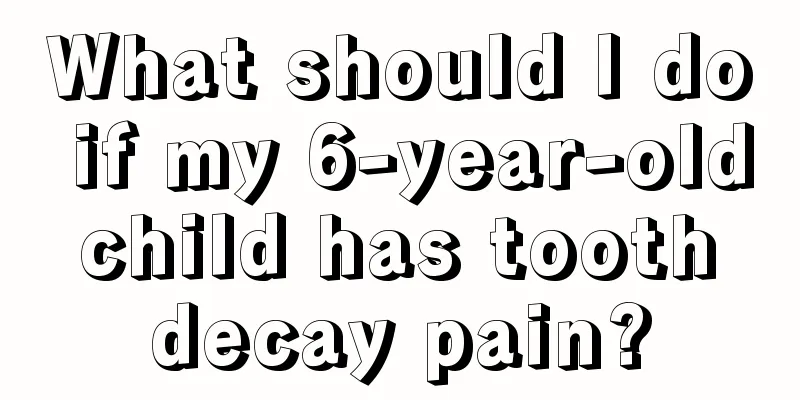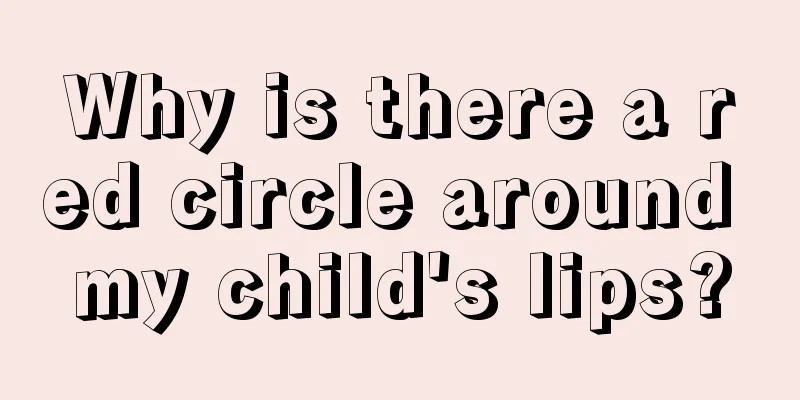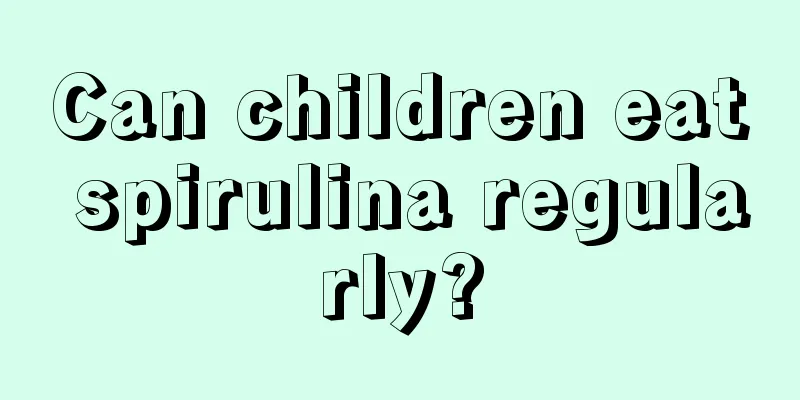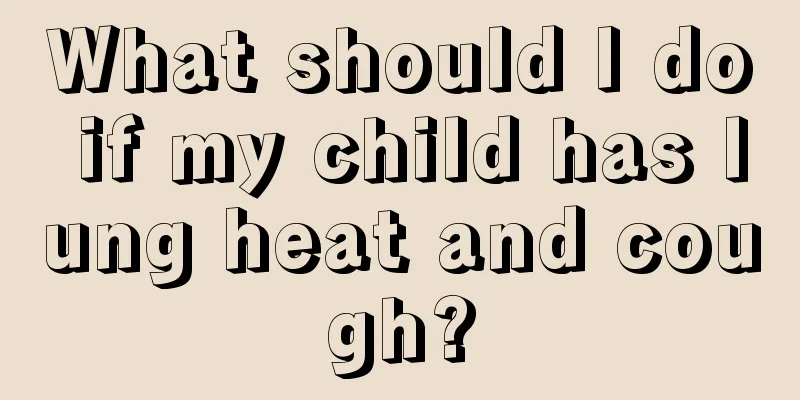What should I do if my 6-year-old child has tooth decay pain?

|
Even if there are adults around who constantly remind children not to eat too much candy, or threaten them that their teeth will be eaten away and air will leak in their mouths if they eat candy. However, almost every growing child will experience toothache symptoms. For mild cases, you just need to rest for a few days and avoid eating hard foods. For serious cases, you need to go to the hospital for registration and treatment. So what should you do if your 6-year-old child has tooth decay pain? As the saying goes, "Toothache is not a disease, but it is really painful when it happens." Some people, once they have symptoms of toothache, think of taking medicine to solve the problem. Here I would like to remind everyone that when a toothache occurs, you must see a dentist. Oral medications can only treat the symptoms but not the root cause. Only by treating the cause of the toothache can you cure the root cause of the toothache. Toothache is the most obvious symptom of various dental diseases. There are many reasons for toothache. The six main culprits of toothache are: Dental caries. Commonly known as "cavities" or "tooth decay". Dental caries can occur in both deciduous and permanent teeth. Dental caries can cause loss of chewing ability. In severe cases, complications such as pulpitis, periodontal abscess, and mandibular osteomyelitis may occur, endangering overall health. Patients do not feel pain in the early stages of tooth decay. When the cavity develops to the dentin, pain (usually sour pain) occurs when encountering cold, hot, sour, salty or sweet foods. If the caries cavity is deep, close to the dental pulp (dental nerve) or has penetrated into the dental pulp, the above-mentioned stimulation may cause unbearable pain. As the cavity continues to expand, the crown of the tooth will fall off piece by piece, leaving only the remaining root. Therefore, regular checks should be carried out and any caries found should be filled promptly. Acute pulpitis Pulpitis, commonly known as dental neuralgia, is mostly caused by the infection of caries that develops into the pulp cavity and is the main cause of severe toothache. The pain is spontaneous and aggravated by stimuli such as cold or heat. It can be even more severe when sleeping at night. The pain is paroxysmal at first, that is, it hurts for a while and then stops, and then it becomes continuous pain. The pain can also be reflected in the head, ears, neck, etc. When the pulp becomes purulent in the later stages, the pain will be relieved by drinking cold water or taking a breath of cold air. If not treated in time, pulpitis can develop into apical abscess or even mandibular osteomyelitis, making it difficult to save the affected tooth. Acute pericoronitis of wisdom teeth Pericoronitis of wisdom teeth often occurs when oral hygiene is poor and the body's resistance is reduced. It is more likely to occur in mandibular wisdom teeth than in maxillary wisdom teeth. At the onset of the disease, the patient will feel gum pain. The mandibular wisdom teeth are close to the pharynx, which may cause sore throat and difficulty opening the mouth, affecting speaking and eating. In severe cases, it may be accompanied by high fever, facial swelling, and swollen submandibular lymph nodes. This is mainly because the third molar is in the wrong position, and part of the crown surface is covered by gums, which often cause food to be stuck, easily causing bacterial infection and inflammation, leading to redness and swelling of the gums, persistent pain, sometimes accompanied by sore throat and inability to open the mouth wide. The inflammation around the crown of the wisdom tooth is called pericoronitis. You should ask a dentist to check and remove it early. Wedge-shaped defect at the cervical region Due to gum recession and hard toothbrush bristles, the enamel is very thin on the tooth surface close to the gums. The friction of the bristles when brushing often wears off the enamel, and the exposed dentin is softer and is worn into deeper depressions by the bristles, causing soreness when eating cold or hot food. In this case, the tooth should be filled promptly. Severe tooth enamel wear Tooth enamel is commonly known as enamel. Because teeth have been responsible for chewing food for a long time, the outermost layer of enamel is gradually worn away, exposing the second layer of dentin. Because there are nerve endings distributed in the dentin, you can feel soreness when exposed to cold, heat or mechanical stimulation. Acute periodontitis. The symptoms include severe pain, persistent throbbing pain, inability to chew, the painful tooth seems to be taller than other teeth, and there is a feeling that the tooth is floating. There are also some uncommon causes of toothache, such as the tooth has not erupted, pressing on nearby teeth, calculus in the pulp, cracked crown, etc. In addition, certain special groups of people may also experience toothache, such as pulp congestion in patients with hypertension, inflammation and necrosis of the pulp blood vessels in patients with diabetes, etc. No matter what the cause of toothache is, it must be treated early under the guidance of a doctor. |
<<: What to do if your child has poor coordination
>>: What to do if a five or six year old child has toothache
Recommend
Why does my three-year-old baby’s teeth turn black?
When a child is just born, there are many periods...
How to eat egg yolk for six months baby
Newborn babies only need to drink milk, but when ...
Why do children keep farting?
Parents often find that their children fart easil...
What to do if your child is often angry
On the one hand, if a child is often angry, it me...
Children's over-flowering is a symptom
In general, roseola infantum is the first time a ...
Can HPV16 be passed on to children?
HPV16 is a highly contagious virus, and the main ...
Why does my child blink frequently?
Blinking is a normal physiological movement of th...
What causes children's hair growth?
It is generally a normal physiological phenomenon...
Children suddenly have allergies
If a child's skin suddenly develops allergies...
Does a child's precocious puberty need treatment?
If precocious puberty occurs in childhood, the ha...
Knowledge about measuring trace elements for children
There are trace elements in everyone's body, ...
How to treat a child's low-grade fever correctly
If a child has a low fever and the symptoms are r...
What to do if your 1-year-old baby has symptoms of heat stroke
In the hot summer, children's immunity is rel...
Symptoms of dislocated arm in children
Children's bodies and bones are relatively fr...
Can babies drink milk when they have a fever?
For babies, since their immune system is generall...









